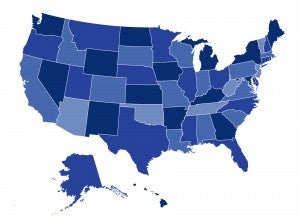
The Affordable Care Act provided significant start-up funds—over $4 billion have been awarded thus far—to help states set up their health insurance marketplaces. However, after January 1, 2015, there will be no more federal establishment grant funds awarded and state-based marketplaces, including those using the federal IT platform, must be financially self-sustaining.
In developing their financing mechanisms, state based marketplaces have sought to minimize excess costs for consumers while ensuring sufficient revenue for ongoing operations. Although approaches vary, most of these states have instituted user fees on plans sold through the marketplace as their primary financing mechanism, with assessments for 2015 ranging from 1 percent to 3.5 percent of monthly premiums.
Considering the Supreme Court’s recent decision to hear the case of King v. Burwell, state officials in many of the states that currently rely on the federal marketplace may be looking to develop their own state based marketplaces. For these states, many of the current state based marketplaces offer examples of sound approaches to ensuring long-term financial sustainability.
In their latest blog post for the Commonwealth Fund Sarah Dash, Kevin Lucia, Justin Giovannelli and Sean Miskell share findings on state marketplace approaches to financing and sustainability. Read more here.

